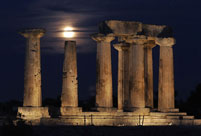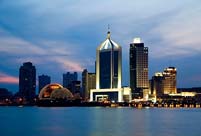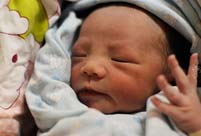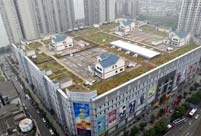 Interpreting the eight issues of the G20 summit
Interpreting the eight issues of the G20 summit
 Wild golden monkeys live at Qinling Mountains in NW China
Wild golden monkeys live at Qinling Mountains in NW China
 President Xi visits four central Asian nations and attend G20, SCO summits
President Xi visits four central Asian nations and attend G20, SCO summits
 Tibetan ethnic costumes presented during tourism festival in NW China
Tibetan ethnic costumes presented during tourism festival in NW China
 Military plane crashes in NE China
Military plane crashes in NE China
 Summer jobs: A or B
Summer jobs: A or B
 Vintage cars exhibited at auto cultural festival in China's Shanxi
Vintage cars exhibited at auto cultural festival in China's Shanxi
 Reading by the tongue
Reading by the tongue
 Those embarrassing copycat buildings
Those embarrassing copycat buildings
But actually, the supply of cars increased after the car plate lottery policy was begun in Beijing, Shanghai, and Guangzhou, according to earlier media reports.
Yuan said the dealers in Seattle "usually would have enough cars ready as soon as a customer buys a car. When the cars were not available at that moment, the dealers would deliver in several weeks."
Chen said "all the new cars in Hong Kong are imported because no manufacturers are available here. Hong Kong is a free trading port and only levies tariffs on luxury goods. The tariffs on imported cars are lower."
An expert at China Automobile Dealers Association said imported cars to the Chinese mainland are levied tariffs and taxes of less than 140 percent on top of the import price. But many imported cars are offered at retail prices triple or quadruple the import price.
Beijing Youth Daily found that manufacturing and transporting costs contributed 25 percent to 40 percent to the suggested retail price; tariff and taxes contributed 20 percent to 30 percent to the retail price. In the end, dealers may obtain about 30 percent to 40 percent in profits.
On the basis of imported car prices, Chinese mainland levies a 25 percent tariff, 17 percent value-added-tax, and up to 40 percent consumer tax. An imported vehicle trading company on the Chinese mainland usually pays 25 percent income taxes, and other taxes including business tax, urban maintenance and construction tax, education tax, and some more according to local governments.
When looking at a China-made Audi Q5 model and its US equivalent, Peopledaily.com.cn found the China-made car is sold for 150,000 yuan higher on the Chinese mainland than an imported Q5 in the US.
The Audi Q5 2.0 TFSI, imported to the US, is priced at $37,300 (228,267 yuan). The China-made Audi Q5 2.0T has a suggested retail price of 383,600 yuan on the Chinese mainland. Buyers actually pay more because of dealer mark-up from the suggested price.

 Weekly selection of world photos (Aug.19-Aug.24)
Weekly selection of world photos (Aug.19-Aug.24) Army aviation brigade in actual-troop drill
Army aviation brigade in actual-troop drill Top 10 Chinese provinces for the well-heeled
Top 10 Chinese provinces for the well-heeled  Fan Bingbing poses for Malaysian magazine Citta Bella
Fan Bingbing poses for Malaysian magazine Citta Bella Wild dream: Hell-like training for bodyguard
Wild dream: Hell-like training for bodyguard  Zhang Xinyi covers COSMOPOLITAN
Zhang Xinyi covers COSMOPOLITAN The story of a savior sibling
The story of a savior sibling China’s weekly story
China’s weekly story  A collection of bizarre rooftop buildings around China
A collection of bizarre rooftop buildings around China 100th birthday of 'Little Mermaid'
100th birthday of 'Little Mermaid' China, U.S. conduct joint anti-piracy drill
China, U.S. conduct joint anti-piracy drill  Adorable! Marmots get along well with herdsmen
Adorable! Marmots get along well with herdsmen 2013 Taiwan Int'l Tourism Expo kicks off in Taipei
2013 Taiwan Int'l Tourism Expo kicks off in Taipei Photo story: Take a gap year
Photo story: Take a gap year Nokia's Global Headquarters: visiting a declining empire
Nokia's Global Headquarters: visiting a declining empireDay|Week|Month